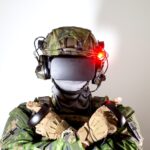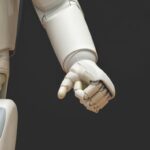Unlocking the Power of AI: Practical Applications of Computer Vision
Artificial Intelligence (AI) has gone from being a futuristic concept to an essential part of our everyday lives. One of the most exciting branches of AI is computer vision, a field that trains computers to interpret and understand the visual world. In simple terms, it automates the human vision using software and hardware. But how does this translate to practical applications that can help small businesses thrive?
Computer vision’s capabilities are expansive and growing by the day, with potential to revolutionize various industries, enhance customer experiences, and streamline operations. From healthcare to retail, to transportation and beyond, the applications are limitless. In this blog post, we explore how computer vision is being put to practical use and what the future holds for this groundbreaking technology.
Computer Vision in Retail
The retail industry has been one of the quickest to adopt computer vision technology. In this sector, computer vision is used for a multitude of applications that enhance the shopping experience and streamline operations. One prime example is Amazon Go, a chain of convenience stores that use computer vision, sensor fusion, and deep learning to enable a ‘Just Walk Out’ shopping experience. The technology detects when products are taken from or returned to the shelves and keeps track of them in a virtual cart.
Computer vision also plays an integral role in improving inventory management. Traditional methods of inventory management are labor-intensive and prone to human error. However, with computer vision technology, businesses can automate the process, leading to improved accuracy and efficiency. For instance, a company called Trax uses computer vision to provide real-time, shelf-level insights that help businesses optimize their retail execution and boost sales.
Healthcare and Computer Vision
Healthcare is another industry where computer vision is making significant strides. From diagnosing diseases to improving patient care, this technology is revolutionizing the medical field. PathAI, a Boston-based company, uses computer vision for disease identification and diagnosis. Their technology assists pathologists in detecting diseases like cancer more accurately and efficiently.
Additionally, computer vision is used in patient monitoring systems to ensure safety and provide quality care. For instance, computer vision can monitor whether patients are taking their medications properly, falling risk, and even detect early signs of conditions like pressure ulcers. This not only improves patient outcomes but also significantly reduces healthcare costs.
Computer Vision in Transportation and Security
Computer vision is playing a significant role in improving transportation systems and enhancing security. Autonomous vehicles use computer vision to navigate roads and avoid obstacles. For instance, Tesla’s autopilot feature uses computer vision, radar, and sensors to provide semi-autonomous driving.
When it comes to security, computer vision can help enhance surveillance systems by detecting unusual activities or identifying individuals. This technology can also be used in biometric systems for face recognition, making them more secure and effective.
The Future of Computer Vision
The potential of computer vision is vast, and we are only scratching the surface. According to a report by Markets and Markets, the computer vision market is expected to reach $17.4 billion by 2023. This growth will be driven by advancements in machine learning and increasing demand for automation in various sectors.
In the future, we can expect to see computer vision incorporated into more and more aspects of our lives. It could play a significant role in smart homes, where it can be used for everything from recognizing who is at the door to detecting if a stove has been left on. It could also be used in agriculture to monitor crop health and detect pests.
Conclusion: Key Takeaways
Computer vision is a powerful technology with the potential to revolutionize various sectors. For small businesses, adopting computer vision can enhance customer experiences, streamline operations, and provide a competitive edge. Whether it’s improving inventory management in retail, assisting with disease diagnosis in healthcare, or enhancing security systems, the practical applications of computer vision are vast and growing.
As the technology continues to evolve, businesses that leverage computer vision will be better positioned to anticipate changes and seize new opportunities. Therefore, it is crucial for businesses to understand how computer vision can be applied in their operations and stay updated with the latest advancements in this field.




